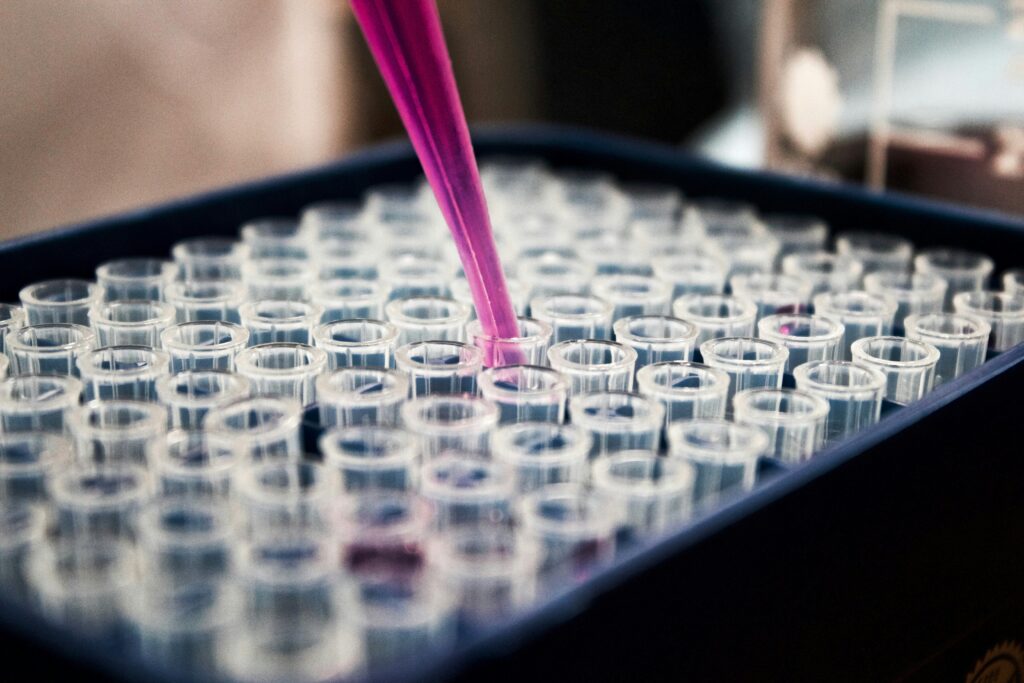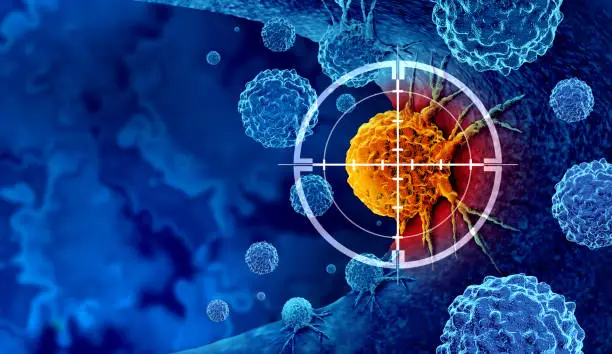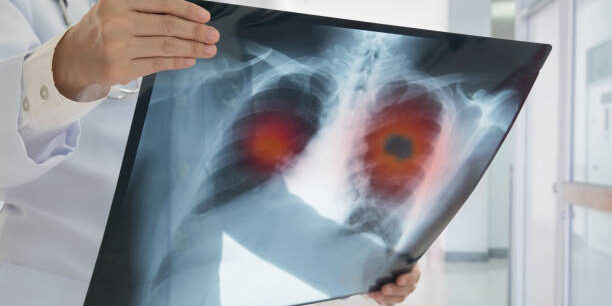Introduction
Cancer, one of the leading causes of death globally, accounts for approximately 20 million new cases and 9.7 million deaths worldwide as of 2022. The figures for cancer globally are staggering. By 2024, the number of new cases per year will rise to 29.9 million and the death rates to 15.3 million.[1]. For instance, in the United Kingdom, approximately 375,000 new cases are reported annually, and this number is projected to rise to over 500,000 by 2040.[2] More than 70% of all cancer deaths occur in low- and middle-income countries, where resources available for prevention, diagnosis and treatment of cancer are limited or nonexistent.[3]
Cancer is a large group of diseases that occur when abnormal cells grow uncontrollably and go beyond their usual boundaries to invade adjoining body parts and/or spread to other organs.[4] Cancer is caused mainly by cellular changes that start in any organ or tissue, go beyond its boundaries and spread to other organs of the human body. Certain forms of cancer result in visible growths called tumours, while others do not. The disease’s attack on the human body is not limited as it affects all races, genders and ages. While lung, prostate, liver, mouth and stomach cancers predominately affect men, thyroid, breast, lung, ovarian, cervical and colorectal cancers are common in women. Children are mostly plagued by blood (leukemia), bone (osteosarcoma), eye (retinoblastoma) and brain cancer.
While genetic factors, hormonal imbalance and autoimmune reaction can contribute to the development of cancer, certain lifestyles such as smoking, alcohol consumption, excess body weight, poor nutrition and physical inactivity also play a huge role in the development of the disease.
Access to early diagnosis is critical to the reduction of premature mortality from cancer. Given the consequences of delays in treatment – the likelihood of death and disability – it is important for individuals and governments to prioritise early detection. The government needs to implement programmes that provide access to early detection. The importance of early detection cannot be overemphasised. It significantly enhances treatment efficacy and survival rates.

Understanding Early Detection and Why It Matters
Because of the peculiarity of the disease, it requires specific diagnostic procedures and management strategies. According to the World Health Organisation (WHO), comprehensive cancer control comprises core components: prevention, early diagnosis and screening, treatment, palliative care and survivorship care.[5] While prevention is the most preferred strategy in the control of cancer, it is not applicable in all cases, as some cancers are unpreventable. Thus, given that part of the population will still develop cancer, it becomes penitent to prioritise early detection.
Early detection is the timely identification of cancerous cells in patients who have developed or shown signs of disease symptoms.[6] It is the awareness (by the public or health professionals) of early signs and symptoms of cancer to facilitate diagnosis before the disease becomes advanced.[7] It is based on the concept that the sooner in its natural history the cancer is detected, the more effective the treatment is likely to be.[8] The idea is that early detection significantly increases the chances of treatment efficacy and, consequently, the chances of survival. Studies have shown that early detection of cancer increases patients’ survival rates. For instance, the five-year survival rate for breast cancer in the UK is 85%, according to the charity Breast Cancer Now, with early diagnosis through screening playing a major role in this data point.[9] Similar improvements have been seen in other countries, such as the United States of America, where early detection has been praised for the significant improvement in outcomes for women with breast cancer.[10] While the survival rates vary depending on the type of cancer, it does not obliterate the fact that early detection plays a huge role in high survival rates.
Early detection aims to detect when a cancerous growth develops in a part or organ of the body before it spreads to surrounding organs. Early detection also aims to detect precancerous lesions. The focus of early detection of cancer is on people with signs and symptoms consistent with cancer. This distinguishes early detection from screening, which focuses on asymptomatic individuals. Thus, increased awareness of the signs and symptoms of cancer is essential to the detection of the disease in less advanced stages. Individuals and health professionals must be aware of specific cancer symptoms and the urgency to seek care associated with such symptoms. Therefore, it is critical that people are taught to recognise early warning signs of the disease, such as lumps, sores that fail to heal, abnormal bleeding, persistent indigestion, and chronic hoarseness, and urged to seek prompt medical attention.[11] Individuals must also be aware of the consequences of delayed presentation for treatment when they exhibit cancer symptoms. Also, it is important to dispel any myths associated with cancer and work to reduce the despair and gloom that usually accompany the consideration of a potential cancer diagnosis.
Early detection also reduces the economic burden of cancer on the individual and family. While early detection will still result in treatment costs, such treatment costs will be lower when compared to the disease spreading and requiring aggressive treatment, which will invariably involve a higher treatment cost and even a loss of livelihood.
The Role of Screening in Saving Lives
Screening is the systematic application of a test in a presumably asymptomatic population. It aims to identify individuals with an abnormality suggestive of a specific cancer.[12] Screening uses the means of test to identify unrecognised cancer in asymptomatic individuals. Screening refers to the use of simple tests across a healthy population to identify those individuals who have a disease but do not yet have symptoms. Examples include breast cancer screening using mammography or clinical breast exams and cervical cancer screening using pap smears, human papillomavirus tests or visual inspections with acetic acid.[13]
The screening process typically includes a system of informing and inviting the target population to participate; administering the screening test; following up with test results and referral for further testing among those with abnormal test results; and ensuring timely pathologic diagnosis, staging and access to effective treatment with routine evaluation to improve the process.[14] Screening programmes are vital public health strategies in combating noncommunicable diseases such as cancer. They assist in identifying cancers at earlier stages in asymptomatic patients, leading to better patient outcomes and improved quality of life. This is of huge advantage to both the patient and physician as cancer detected early may be easier to treat, manage or cure.
Screening can help to detect cancer at the early stage. That improves survival and reduces mortality rates. In the NCI-sponsored, randomized National Lung Screening Trial (NLST), for example, screening with low-dose spiral CT scans reduced lung cancer deaths by 15% to 20% relative to chest x-rays in heavy smokers.[15]. In further demonstrating the importance of screening in saving lives, the experience of women in the Nordic countries becomes relevant. The systematic application of screening in Iceland and Finland during the 1960s sharply reduced cervical cancer in those countries. This contrasts with the slow but steady increase of cervical cancer in Norway, where screening was not applied systematically until 1980.[16] All of these underscore the role of screening in reducing mortality arising from cancer

Conclusion
While early detection and screening programmes are veritable measures for minimising mortality from cancer, the challenge exists with access to these measures in developing countries such as Nigeria. In these countries, there is the challenge of inequities in access to early detection, screening and treatment. Nigeria appears to be making significant strides with the launch of its National Strategic Cancer Control Plan (2023-2027). The Plan has eight priority areas, including diagnosis and treatment. The expected outcomes of the implementation of this Strategic Plan include a reduction in the incidence of cancers in Nigeria as well as a reduction of morbidity and mortality through early detection methods and improved access to high-quality research-driven cancer treatment. To achieve the outcome of reduction of morbidity and mortality through early detection methods, it is projected that a framework will be established to facilitate access to cancer screening in the country. A holistic implementation of the Plan could significantly reduce Nigeria’s cancer burden, especially with the implementation of early detection measures.
References
[1] Bray F, Laversanne M, Sung H, Ferlay J, Siegel RL, Soerjomataram I, Jemal A. Global Cancer Statistics 2022: GLOBOCAN Estimates of Incidences and Mortality World for 36 Cancer in 185 Countries. CA Cancer J Chin, Published online 4 April 2024; https://doi.org/10.3322/caac.21834.
[2] https://www.mercer.com/en-gb/insights/employee-health-and-benefits/health-and-wellbeing/cancer-awareness-the-importance-of-early-detection/
[3] World Health Organization. (2007). Early detection. World Health Organization. https://iris.who.int/handle/10665/43743
[4] https://www.who.int/health-topics/cancer#tab=tab_1.
[5] Guide to cancer early diagnosis. Geneva: World Health Organization; 2017. Licence: CC BY-NC-SA 3.0 IGO.
[6] Ibid.
[7] World Health Organization. (2007). Early detection. World Health Organization. https://iris.who.int/handle/10665/43743
https://www.who.int/health-topics/cancer#tab=tab_1
[8] Ibid.
[9] https://www.mercer.com/en-gb/insights/employee-health-and-benefits/health-and-wellbeing/cancer-awareness-the-importance-of-early-detection/
[10] Shulman LN, Willett W, Sievers A, Knaul FM. Breast cancer in developing countries: opportunities for improved survival. J Oncol. 2010;2010:595167
[11] National Cancer Control Programmes: Policies and Managerial Guidelines. – 2nd ed.
[12]World Health Organization. (2007). Early detection. World Health Organization. https://iris.who.int/handle/10665/43743
[13]https://www.who.int/europe/news-room/fact-sheets/item/cancer-screening-and-early-detection-of-cancer. Accessed January 2025.
[14] Guide to cancer early diagnosis. Geneva: World Health Organization; 2017. Licence: CC BY-NC-SA 3.0 IGO
[15] https://www.cancer.gov/about-cancer/screening/research/what-screening-statistics-mean. Accessed January 2025.
[16] National Cancer Control Programmes: Policies and Managerial Guidelines. – 2nd ed.






